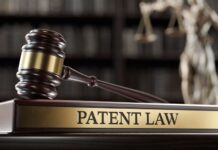
By Essenese Obhan
By Charul Yadav
By Garima Kulshreshtha
It is a commonly accepted principle of patent law that two patents cannot be granted to the same applicant for one invention. This follows from the idea of a patent itself, which is a bundle of rights (such as the right to use or the right to license) granted to an inventor for their invention. This bundle of rights is available only for a limited period of time. Once the time period expires, the rights lapse, the invention enters the public domain, and becomes available to the world at large. While the principle is well regarded, there are ambiguities about what can be regarded as multiple patents for the same invention. In the practice of patent law, this is known as double patenting. In India, in particular, double patenting appears to be a grey area, with no explicit provision in law, and no clear interpretive stand on the issue. In the context of relatively clearer positions taken in other jurisdictions, there is a need for debate on double patenting in India.
What is double patenting?
The general rule is that a person can be granted only one patent for one invention. If this rule did not exist, a person could potentially obtain multiple patents on the same invention or inventive concept, and by extension, acquire a monopoly over the same for an indefinite period of time. But this is not the intent of patent law. On the contrary, the purpose of a patent is to communicate to the public certain specific information about the underlying invention, such as the identity of its owner, the nature of the invention, and most importantly, the duration for which the patent rights are granted. This means that the public is clear about the date on which the invention enters the public domain. The sentiment underlying the general rule is beautifully put in the classic 1897 case of United States of America v American Bell Telephone Company, (167 US 224): The thing which the public pays for in submitting to the monopoly created by a patent is the free enjoyment of the invention after the patent expires. To deny to the public this free use of the invention to which it has become entitled under the contract (of patent) is to take away from it a thing of value which it has bought and paid for…. A second patent covering the same invention has this effect. It deprives the public of the consideration which it was to receive for being excluded from the free use of the thing during the life of the first patent. Besides the public, there are other stakeholders who benefit from the general rule. For instance, it saves time and effort for the patent offices, as examining officials no longer have to spend time assessing and examining multiple patent applications with the same subject-matter or the same scope of claims. The existence of more than one patent on the same subject matter could result in multiple infringement 32 proceedings.
for the same invention. This will lead to a cascading net beneficial effect on costs to the system, both in terms of time and money. Double patenting refers to the practice of obtaining or granting (or attempting to obtain or grant) two or more patents for a single invention, by the same applicant, in the same jurisdiction. Most patent systems around the world, in principle, agree that double patenting is unacceptable. However, the scope of what is considered to be double patenting may vary across jurisdictions. The issue of double patenting may arise between two or more pending applications, or between one or more pending applications and a patent. Examining patent offices usually look for three pre-requisites for raising an objection of double patenting:
- entity: an objection of double patenting can only be raised if the applicant or inventive entity of the patent applications in question is common. A common inventive entity means that at least one of the inventors should be common. It would be regarded as a case of double patenting even if the inventor or inventors named in each patent or application are not identical, so long as there is common ownership.
- Same or substantially same invention: the patents or applications in question should have same or similar claims. In other words,they should not have claims conflicting with each other. It is possible that patents or applications may have the same description (as in case of divisional applications), but claim different subject-matter, in which case it may not be regarded as double patenting. The scope and application of this requirement may vary across jurisdictions.
- The other patent application should be pending or have been granted: conflict of claims or double patenting can arise only when the other application is alive and published or has been granted a patent. If the other application has been abandoned, an objection of double patenting cannot be raised.
The scope of what is considered as double patenting seems to vary in different jurisdictions, for example, the European Patent Office may allow overlapping claims, whereas such claims may be objected in the US for being non-statutory obviousness-type double patenting. Similarly, India also objects to overlapping claims, as some decisions discussed below show.
US patent law
There are two types of double patenting objections under the US patent system. The first is known as same-invention-type double patenting, and the second is known as obviousness-type double patenting. The same-invention-type double patenting is based on 35 U.S.C. 101, which states that ‘who33 ever invents or discovers any new and useful process, machine, manufacture, or composition of matter, or any new and useful improvement thereof, may obtain a patent therefor, subject to the conditions and requirements of this title’. It arises in cases where the claims under consideration are identical (the claims define and claim the same invention). The test for double patenting requires an examination of whether practising a claim in the first patent or application would infringe the claim of another. If such an infringement occurs, there is an absolute bar to the issuance of a second patent, and the second patent application will be refused.
The obviousness-type double patenting is based on a judicially-created doctrine (section 804, US Patent and Trademarks Office’s Manual of Patent Examining Procedure, or USPTO’s MPEP). It arises in cases where a claim in one patent or application is not, in terms of patentability, distinct from a claim in the other (even though the claims are not identical). In other words, the claim in question must be a variation of the other claims. An objection of obviousness-type double patenting does not invoke an absolute bar, and may be overcome if the applicant files a so-called terminal disclaimer. A terminal disclaimer is a statement that causes a second patent to expire on the same date as a first patent. The issue of obviousness- type double patenting usually arises in case of commonly owned patents or applications. However, the US Court of Appeals for the Federal Circuit recently applied it in the case of In re Hubbell 2013 (709 F 3d 1140, 106 USPQ2d 1032) where, though there was no common ownership, one of the inventors was common. In this case, genus claims of one application were found to be anticipated by species claims of another application and therefore refused. It was argued by the plaintiff that the obviousness-type double patenting rejection was not proper because the applications in question were not commonly owned. The Court rejected the contention, citing the USPTO’s MPEP section 804(I) (A). The Court explained that the rationale behind double patenting is not only to prevent an unjust extension of patent rights but also to prevent multiple infringement suits by different assignees asserting essentially the same patented invention. In this case, the Court did not allow a terminal disclaimer to be filed, on the grounds that a terminal disclaimer requires common ownership.
European patent law
There is no express provision under the European Patent Convention (EPC) for prohibiting double patenting. However, the European Patent Organization (EPO) Guidelines for Examination (section G-IV-5.4) offer some guidance in this regard. If there are two or more European applications from the same applicant definitively designating the same EPO member states and the claims of those applications have the same filing or priority date and relate to the same invention, the applicant will have to either amend one or more of the applications so that the subject matter of the claims of the applications is not identical, or choose which of those applications should proceed to grant. If the applicant fails to make a choice, once one of the applications is granted, the others will automatically be refused under article 97(2) read with article 125 of the EPC. Further, as per practice, if the claims of those applications are merely partially overlapping, no objection should be raised (T 0877/06, Boards of Appeal of the European Patent Office).
Indian patent law
As with European patent law, there is no express provision under the Indian patent law barring double patenting. However, it can be deduced from section 46(2) of the Indian Patents Act, 1970 (the Act), as well as certain other provisions in the Act pertaining to prior claiming, divisional applications and patent 34 of additions.
Two patents cannot be granted for one invention
Under section 46(2) of the Act, a patent will be granted for one invention only, or in other words, two patents cannot be granted for one invention. Some decisions of the Controller of patents suggest that an objection under section 46(2) may be raised not only in cases where claims have identical scope, but also in cases where claims have overlapping scope (Controller’s decision in the matter of Indian patent application 2666/CHENP/2008). An objection of double patenting may be raised in the case of a patent application claiming the same invention as in another patent by the same applicant, even if the effective date of filing of the application under consideration is earlier than that patent. For example, in cases where a later-filed application gets granted before the earlier-filed application, an objection of claims with the same scope may be raised during the prosecution of the earlier-filed application (CController’s decision in the matter of Indian patent application 3288/KOLNP/2008).
Anticipation by prior claiming
Section 13(1)(b) of the Act relates to prior claiming. Prior claiming occurs when an invention claimed in any one claim of patent application under consideration is claimed in a claim of a complete specification filed in India with a priority date earlier than that of the said patent application and such complete specification is published on or after the priority date of the said patent application. Prior claiming is relevant to double patenting if both the applications have common applicants or inventive entities. Simultaneously, section 18(2) of the Act provides that the Controller in such a situation may direct that a reference to that other specification be inserted by way of notice to the public in the applicant’s complete specification. To avoid this, the applicant may show, within the prescribed time, that the priority date of their claim is not later than the priority date of the claim of the said other specification; alternatively, the applicant may amend their complete specification to the satisfaction 35 of the Controller.
The rationale behind the incorporation of a reference is to call attention to the relationship between the inventions described and claimed in the specification, where such reference appears and the invention described and claimed in the Letters Patent, which is the subject of such specific reference (page 138, Report on the Revision of the Patents Law by Justice Rajagopala Ayyangar 1959). Clearly, under the law, for the purpose of assessing if an application falls within the purview of prior claiming under section 13(1) (b) of the Act, only the claims are to be considered for comparison. Further, the law provides that an incorporation of reference by way of notice to the public of the earlier specification would suffice to overcome the objection of prior claiming, if the applications do not have the same priority date or the applicant chooses not to amend the claims of the later filed specification. However, some decisions of the Controller of patents seem to suggest that the applicant may also be required to amend claims to make them patentably distinct from the claims of an earlier filed specification, in addition to the incorporation of reference (Controller’s decision in the matter of Indian Application 3647/CHENP/2007).
Divisional applications and same subject matter
Section 16 of the Act deals with divisional patent applications. If two or more divisional applications are filed based on a parent application, the second or subsequent divisional application is examined with respect to the parent application and the other divisional applications, examined earlier, to avoid double patenting. Under section 16(3) of the Act, a patent examiner may require an amendment of the claims of either the parent or divisional application to ensure that neither application includes a claim for any identical matter claimed in the other application. For example, if the parent application claims a process and its divisional application has a product-by-process claim where the process is identical to the process claimed in the parent application, the scope of the claims of both applications may be regarded as overlapping. Further, as the protection provided by a process claim extends to the product obtained directly by that process, a refusal of the divisional application will not jeopardise the rights of the applicant with regard to the product itself (Controller’s decision in the matter of Indian patent application 811/MUMNP/2005). Section 54 of the Act deals with patents of addition. Under this provision, a patent of addition may be obtained for an improvement or modification of the invention in an application for which the applicant has already applied for or has obtained a patent. Therefore, the invention disclosed in a patent of addition should not be an alternate scheme or different embodiment of the invention disclosed in the parent application (Controller’s decision in the matter of Indian patent application 1969/MUM/2007).
The different embodiments or alternate schemes of an invention are considered as same subject matter as claimed in the parent application. The claims of divisional applications or patents of addition should be patentably distinct from the parent application. Even if they contain claims that are overlapping with or are in conflict with the parent application, they may be refused. For example, if the parent application generically claims the inventive features of an invention, its divisional application will not be allowed if it claims the same inventive features specifically without any other substantial difference in the claims. The difference between the parent application and the divisional application or patent of addition should be substantial and not just aesthetic or an obvious variation of one another (Controller’s decision in the matter of Indian patent application 270/CHE/2007).
The various Controllers’ decisions suggest that where an objection of double patenting is raised, an applicant must either amend the applications in such a manner that the scope of the claims are not identical or overlapping, or the applicant will have to proceed with any one of the applications of his choice. If the applicant fails to do so, once one of the applications is granted, the other(s) will be refused under section 46(2) and/or section 13(1)(b), section 16(3) or section 54 of the Act.
A grey area in the Indian Patent Law
As noted above, the position regarding double patenting is relatively clear under US and EP patent systems. While US patent law deals with double patenting of the same or identical inventions, a judicially-created doctrine takes care of the obviousness-type double patenting. Under European patent law, though there is no specific provision on double patenting, the EPO Guidelines for Examination specifically addresses the issue. In India, there is no specific provision on double patenting, but the legal position can be deduced from various legal provisions. However, the interpretation and application of such provisions seems to vary across various patent offices in India. Few precedents are available on the issue, in the form of a handful of Controllers’ decisions alone; and neither the Intellectual Property Appellate Board (IPAB) nor any of the higher courts have discussed this issue. The Indian Manual of Patent Office Practice and Procedure also does not sufficiently deal with the issue. As a result, double patenting is a grey area in Indian patent law and practice. There is a need to streamline the law and its interpretation by various patent offices in India, and it is extremely important for Indian policymakers and patent offices to clarify the Indian position on this issue for the benefit of inventors, patent applicants, practitioners and other stake- 36 holders.
















